✓ Joining us on our Whatsapp Channel: 💬 Explore and Escape!.
Booking through us:
✓ 🏩 🛌 Handpicked Luxury Stays in Budget: Booking.com | Agoda.com
✓ 🍹⛱️ Deals on Private xfers, SIM Cards, City tours, Day trips : 📍🗺️ GetYourGuide | 🛵🧳 Klook
There are an array of landmarks in Europe
to see, with Romania sharing quite a few of those!Romania is a treasure trove of architectural wonders that tell the story of its rich history and culture.
From the majestic castles to the charming villages and vibrant cities, the landmarks of Romania are a testament to its beauty and diversity.
These landmarks are not just physical structures, but symbols of the country’s identity and pride.
Join me on a journey through some of Romania’s most iconic landmarks and discover the magic that lies within each of them.
1. Bran Castle
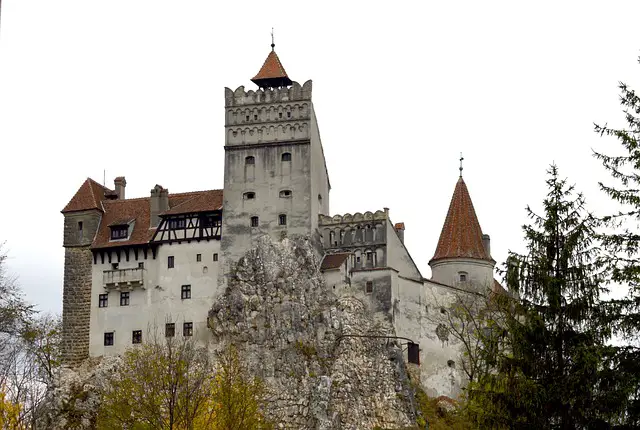
Famous castle located in Bran, Romania that is commonly associated with the fictional character of Count Dracula.
What to see or do: Explore the castle’s interior and learn about its history and folklore. Take in the scenic views of the surrounding countryside from the castle’s turrets.
Walk through the nearby village of Bran and sample local food and drink.
Don’t miss: The castle’s Gothic architecture and impressive collection of medieval art and furniture. The chance to purchase Dracula-themed souvenirs from the castle’s gift shop.
Insider travel tips: Visit during the off-season to avoid crowds and long lines. Opt for a guided tour for a more in-depth experience.
Wear comfortable shoes as there are many stairs to climb within the castle.
2. Peles Castle
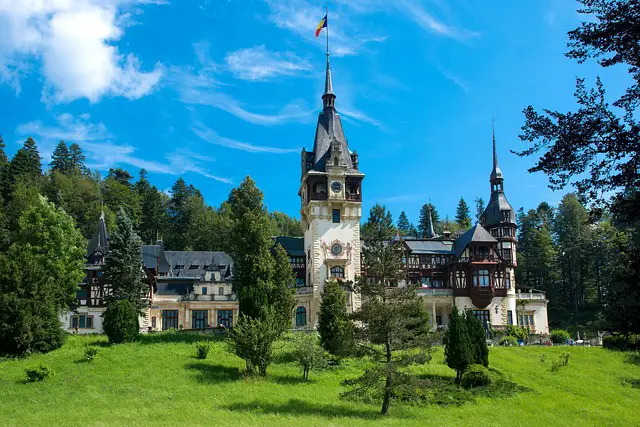
Peles Castle is a stunningly ornate castle situated in the Carpathian Mountains in Romania. It was built in the late 19th century as a summer residence for the Royal Family of Romania.
What to see or do: Visitors can tour the interior of the castle, which boasts over 170 lavishly decorated rooms. The castle is filled with artwork, intricate woodcarvings, stained glass windows, and antique furniture.
The surrounding gardens and architecture are also worth exploring.
Don’t miss: The breathtakingly beautiful armory room with its impressive collection of over 4,000 weapons, including numerous swords, daggers, and guns from different periods.
Insider travel tips: – On busy days, the guided tours can sell out, so it’s best to book in advance.
3. Palace of the Parliament
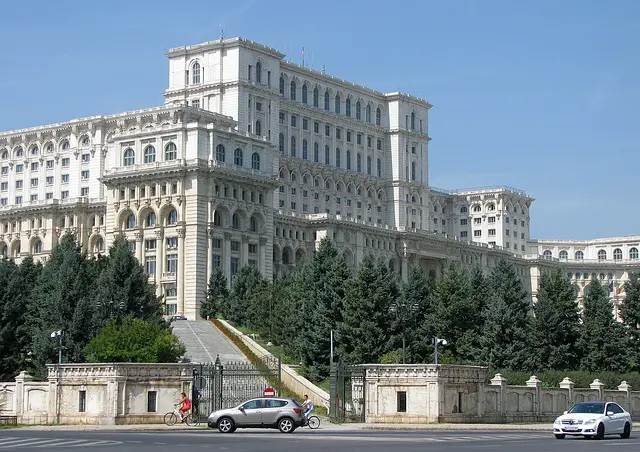
Palace of the Parliament is the seat of the Romanian Parliament located in central Bucharest, the capital city of Romania.
What to see or do: The palace, also known as the People’s House, is the largest administrative building in the world.
You can go on a guided tour of the palace to marvel at its grandeur, which includes marble staircases, crystal chandeliers, and opulent decor.
The tour provides visitors with access to the plenary hall, the Nicolae Balcescu hall, the Union Hall, the Senate hall, and other halls.
Don’t miss: Don’t miss the impressive 12-storey Ceaușescu’s private office, which was the former dictator’s workspace. The balcony behind the office provides an excellent view of the main entrance and the massive National Flag Square.
Insider travel tips: – To avoid the long queues, it is advisable to book your tickets in advance.
4. Merry Cemetery
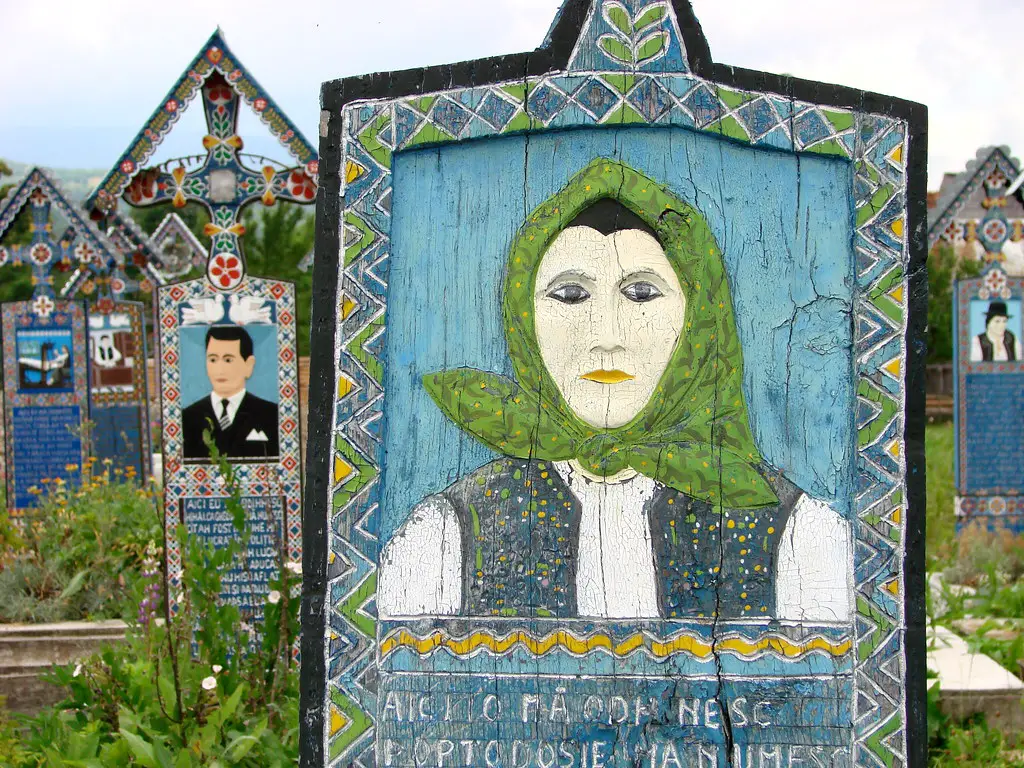
A unique cemetery located in the village of Sapanta, Romania, known for its colorful and humorous tombstones.
What to see or do: Admire the brightly painted tombstones featuring funny anecdotes and illustrations that tell the life story of the deceased.
Don’t miss: The tall wooden gates at the entrance of the cemetery, adorned with elaborate carvings depicting scenes from the Bible and the life of Jesus.
Insider travel tips: Visit in the morning to beat the crowds and explore the cemetery at a more leisurely pace. Be respectful of the families and loved ones who are grieving, as the cemetery is still in use.
Make time to explore the surrounding village and learn about traditional Maramures culture and architecture.
5. Corvin Castle
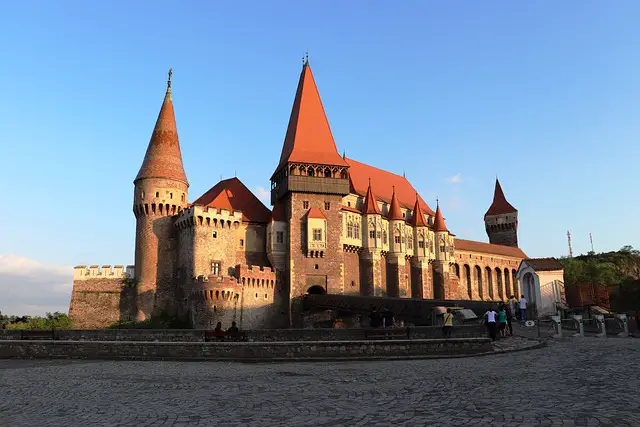
Corvin Castle, also known as Hunyadi Castle, is a Gothic-Renaissance fortress located in Hunedoara, Romania.
What to see or do: – Visit the knight’s hall, where medieval banquets and court proceedings were held.
Don’t miss: – The famous bear pit, where real bears used to be kept in captivity for entertainment.
Insider travel tips: – Avoid visiting during peak tourist season (July-August) to avoid crowds and long lines.
6. Black Church
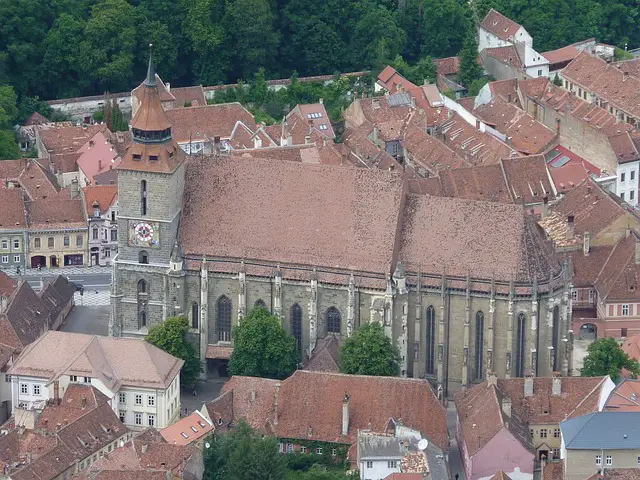
The Black Church, also known as the Biserica Neagră, is a Gothic-style Lutheran church located in Brasov, Romania.
What to see or do: Visitors can admire the impressive architecture and ornate interior of the church, including the intricate carvings on the wooden altarpiece and the beautiful stained-glass windows.
Don’t miss: Don’t miss the chance to hear the church’s impressive pipe organ, which has more than 4,000 pipes and is considered one of the largest in Europe.
Insider travel tips: – Visit the church early in the morning or late in the afternoon to avoid crowds.
7. Sphinx of Bucegi
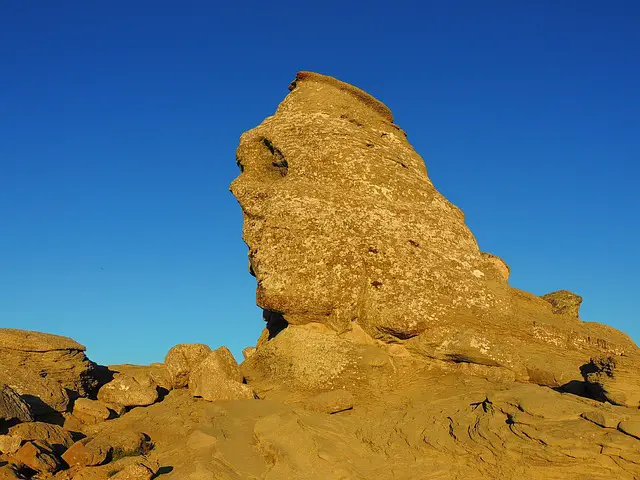
The Sphinx of Bucegi is a natural rock formation located in the Bucegi Mountains of Romania.
What to see or do: Visitors can hike to the Sphinx of Bucegi and marvel at the unique rock formation that resembles a human head with a prominent nose.
Don’t miss: Don’t miss the opportunity to take a photo with the Sphinx in the background and capture the stunning mountain views.
Insider travel tips: The best time to visit is during sunrise or sunset when the Sphinx is basked in a warm, golden light.
8. Turda Salt Mine
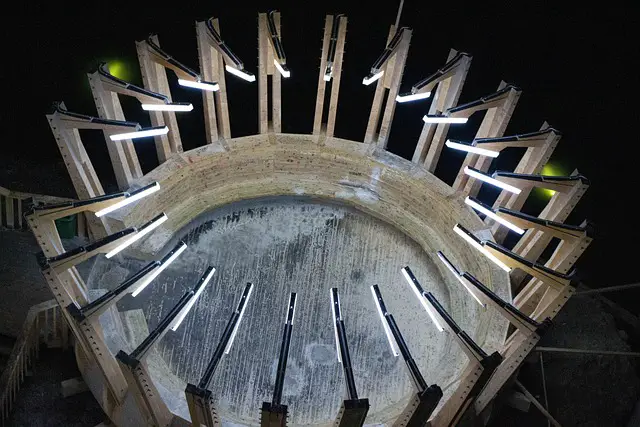
Turda Salt Mine is an underground salt mine turned tourist attraction located in Turda, Romania.
What to see or do: Visitors can explore various chambers of the mine, which includes an underground lake with boats, a Ferris wheel, a mini golf course, an amphitheater, and a salt museum.
Don’t miss: Don’t miss taking a boat ride on the underground lake and riding the Ferris wheel while enjoying a stunning view of the mine.
Insider travel tips: Dress warmly as the temperature in the mine is constant at 10-12 Celsius.
9. Bigar Waterfall
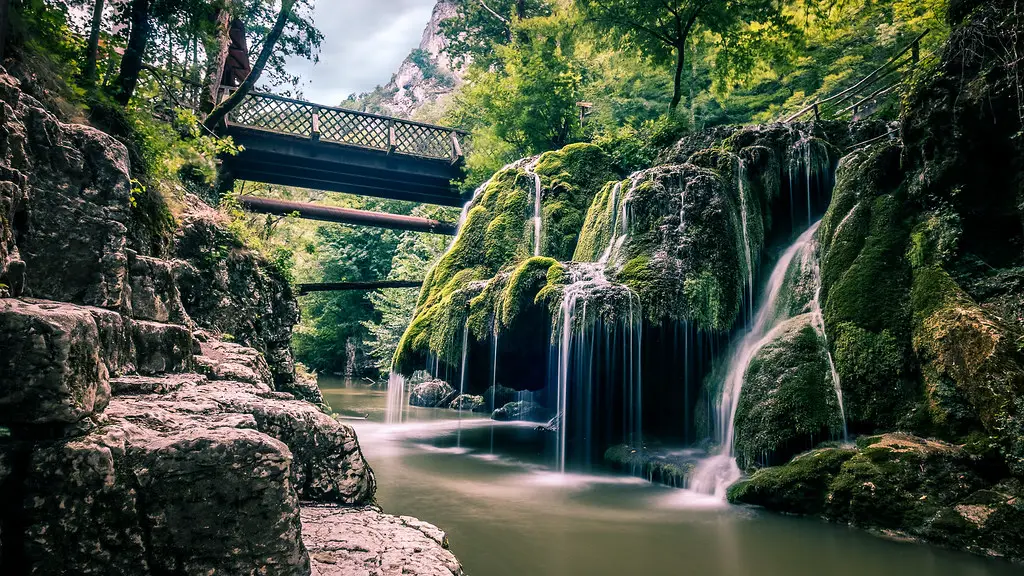
Bigar Waterfall is a stunning natural waterfall located in the Caras-Severin county in southwestern Romania.
What to see or do: Visitors can witness the breathtaking beauty of the waterfall as the water cascades down 80 feet and fans out into a beautiful mist.
The surrounding lush green forest and the tranquil water basin add to the scenic charm of the place. The waterfall can be viewed from a specially built platform in front of it.
Don’t miss: Don’t miss the moss-covered rocks that surround the waterfall and the beautiful rainbow that appears when the sun shines on the mist.
Insider travel tips: The best time to visit the waterfall is either in the early morning or late evening to avoid crowds.
10. Sinaia Monastery
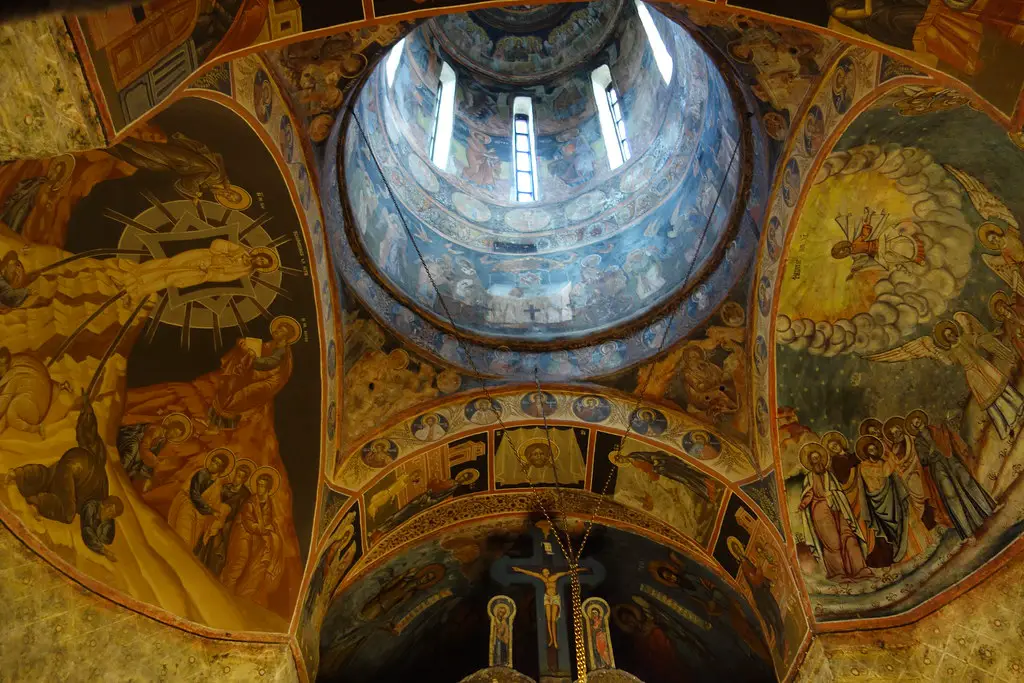
A beautiful Eastern Orthodox monastery located in the town of Sinaia, Romania.
What to see or do: Admire the stunning Byzantine architecture of the monastery and take a guided tour of the interior.
See the intricate frescoes and paintings that adorn the walls and learn about the rich history and cultural significance of the site.
Don’t miss: The monastery’s museum, which houses a collection of rare religious artifacts, such as old manuscripts and icons. Also, take a walk through the peaceful monastery gardens and soak in the tranquil atmosphere.
Insider travel tips: Dress modestly when visiting the monastery, as it is a religious site. If you’re interested in photography, visit early in the morning to capture the best light and avoid crowds.
Combine your visit with a trip to nearby Peles Castle for a full day of sightseeing in the area.
11. Rasnov Fortress
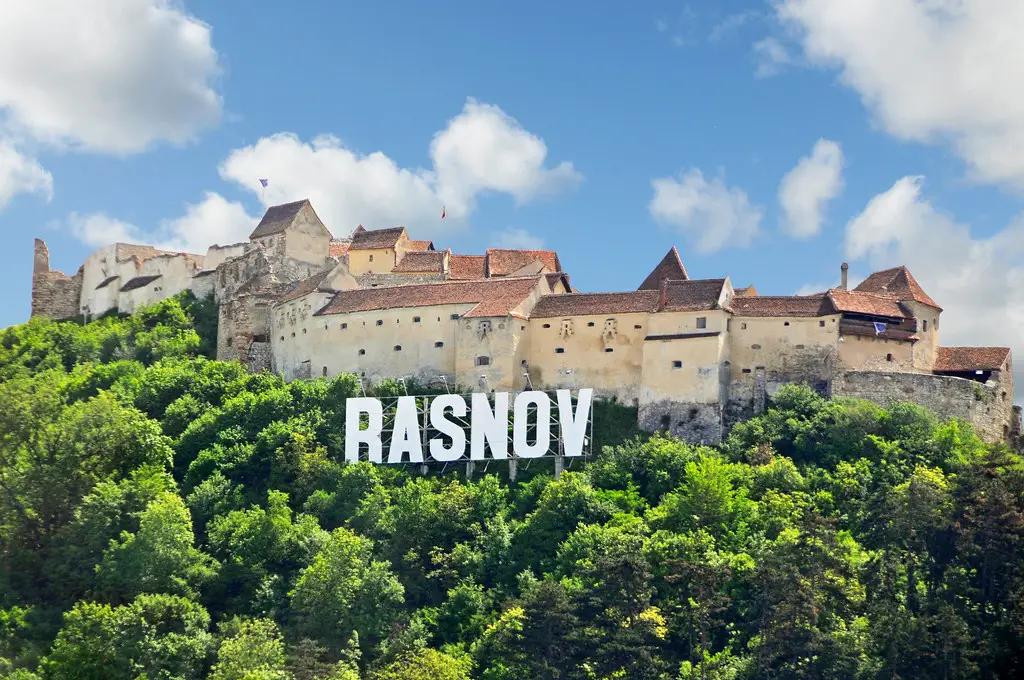
Rasnov Fortress is a medieval citadel located in Rasnov, Romania. It was built in the early 13th century by Teutonic Knights to defend against invading Tartars.
What to see or do: Explore the fortress walls which enclose more than 30 houses, a school, a chapel, and a well. Visit the museum inside the fortress that displays medieval weapons, tools, and daily life items.
Take a tour of the fortress to learn about its rich history.
Don’t miss: The stunning views of the surrounding Carpathian Mountains from the top of the fortress.
Be sure to visit the historic water well, which is over 140 meters deep and was dug entirely by hand during the fortress’s construction.
Insider travel tips: Plan to visit early in the morning or late afternoon to avoid the crowds. Wear comfortable shoes since there are many steps and uneven surfaces.
Bring water and sunscreen as there is limited shade. Take a guided tour to learn about the fortress’s hidden secrets and legends.
12. The Wooden Churches of Maramures

The Wooden Churches of Maramures are a collection of eight UNESCO-listed churches located in the Maramures region of Romania. These churches were built between the 15th and 18th centuries and are known for their unique wooden architecture.
What to see or do: Visit the wooden churches, admire the intricate architecture and the impressive hand-painted murals on the interior and exterior walls. Learn about the history and traditions of the Maramures region.
Don’t miss: Make sure to visit the Church of the Holy Archangels in Rogoz, the tallest wooden church in the world, standing at 78 meters.
Also, don’t miss the Merry Cemetery of Sapanta, located nearby, where unique wooden crosses with colorful inscriptions depict the life of the deceased.
Insider travel tips: Avoid busy weekends in the summer months. Instead, visit during the shoulder season when there are fewer tourists.
Consider hiring a local guide for an authentic and informative experience. Dress modestly and avoid shorts or revealing clothing when visiting the churches.
13. Roman Amphitheater in Ulpia Traiana Sarmizegetusa
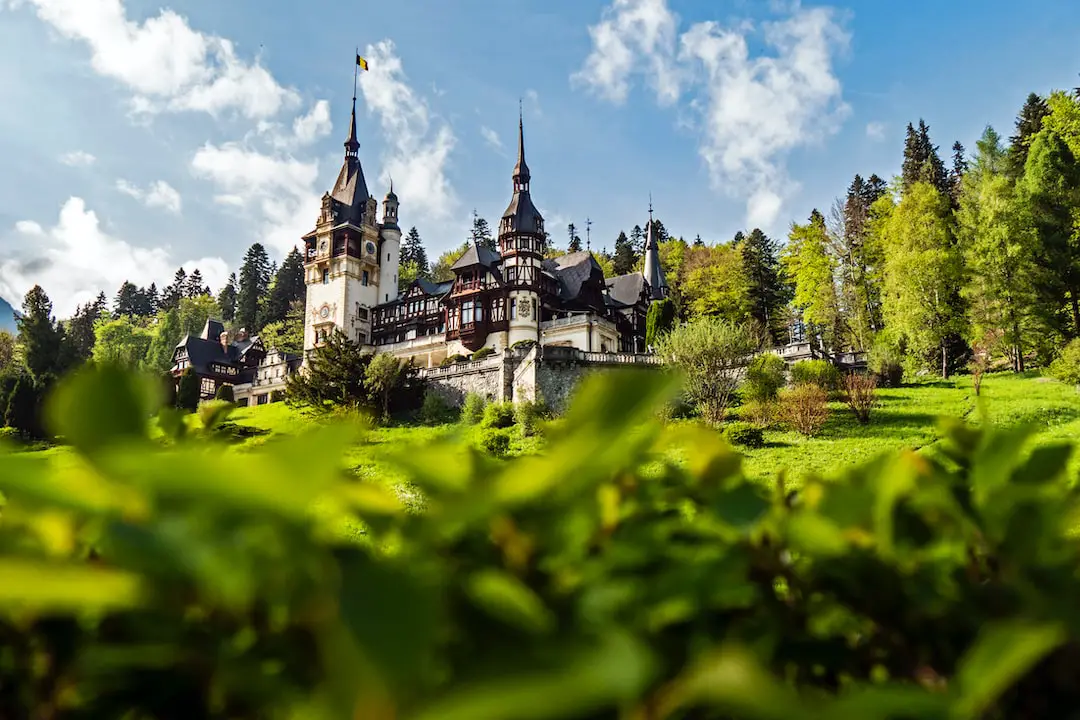
Roman Amphitheater located in Ulpia Traiana Sarmizegetusa, the capital of the Roman province of Dacia.
What to see or do: Explore the well-preserved ruins of the amphitheater, which once hosted gladiatorial contests and public spectacles.
Don’t miss: The underground chambers where gladiators and wild animals were held before the fights, as well as the remains of the arena and seating areas.
Insider travel tips: Visit during the summer months when the ruins are often used for concerts and cultural events. Bring comfortable shoes as there is a lot of walking involved.
Don’t forget to check out the nearby site of the Dacian capital, Sarmizegetusa Regia.
14. Transfagarasan Road
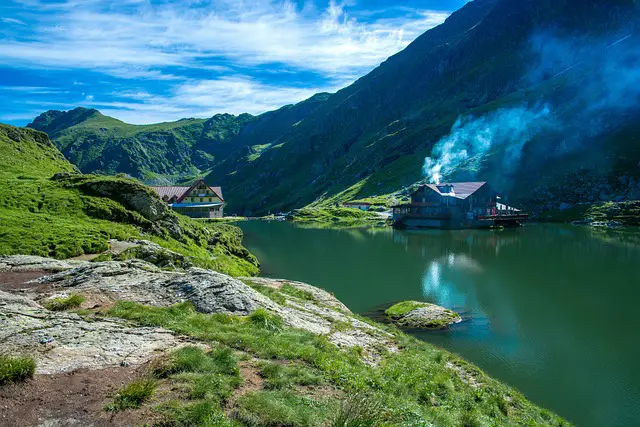
Transfagarasan Road is a winding mountain road in Romania, considered one of the most scenic drives in the world.
What to see or do: Drive along the picturesque road and marvel at the stunning views of the Carpathian Mountains. Stop at Balea Lake for a hike, go fishing or rent a boat.
Visit Poenari Castle, the real-life Dracula’s Castle, located on a steep cliff. Explore the Vidraru Dam, a massive hydroelectric dam that provides electricity to the region.
Don’t miss: Don’t miss the chance to drive through the longest road tunnel in Romania, the Capra Tunnel. It’s an impressive feat of engineering and offers spectacular views.
Insider travel tips: Visit in late spring or early autumn to avoid the large crowds that flock to the road during the summer months.
Be prepared for unpredictable weather, as the road is usually covered in snow until June. Bring warm clothing, as temperatures can drop rapidly at high altitudes.
And lastly, drive carefully, as the road is narrow and winding, with steep drops on the sides.
15. The Sighisoara Citadel
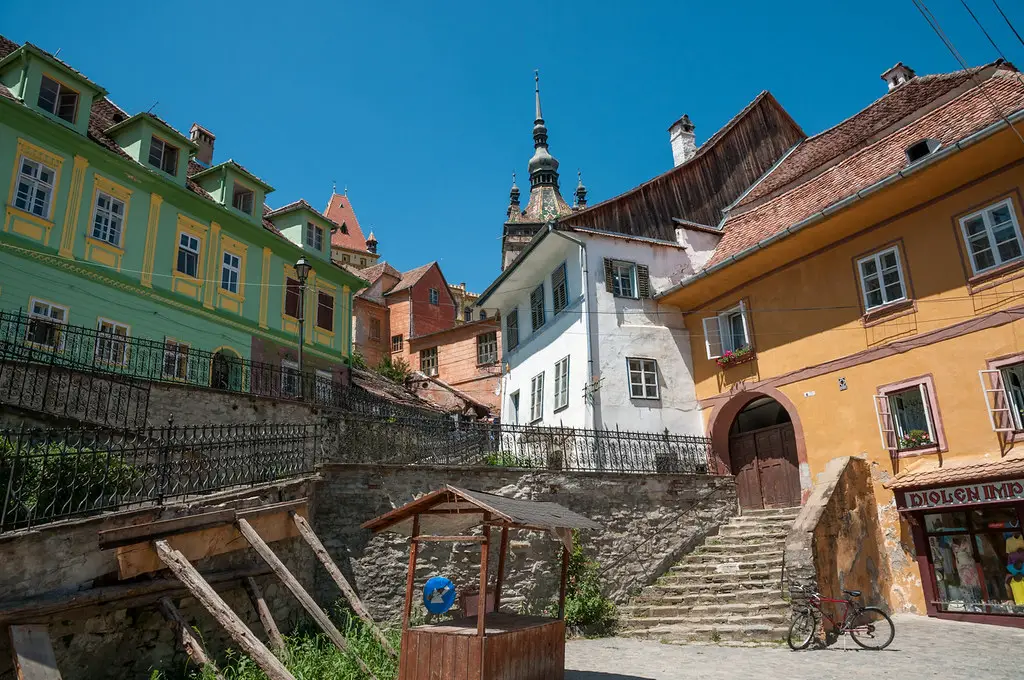
The Sighisoara Citadel is a well-preserved medieval fortified city located in the heart of Transylvania, Romania.
What to see or do:
Don’t miss:
Insider travel tips:
16. Voronet Monastery
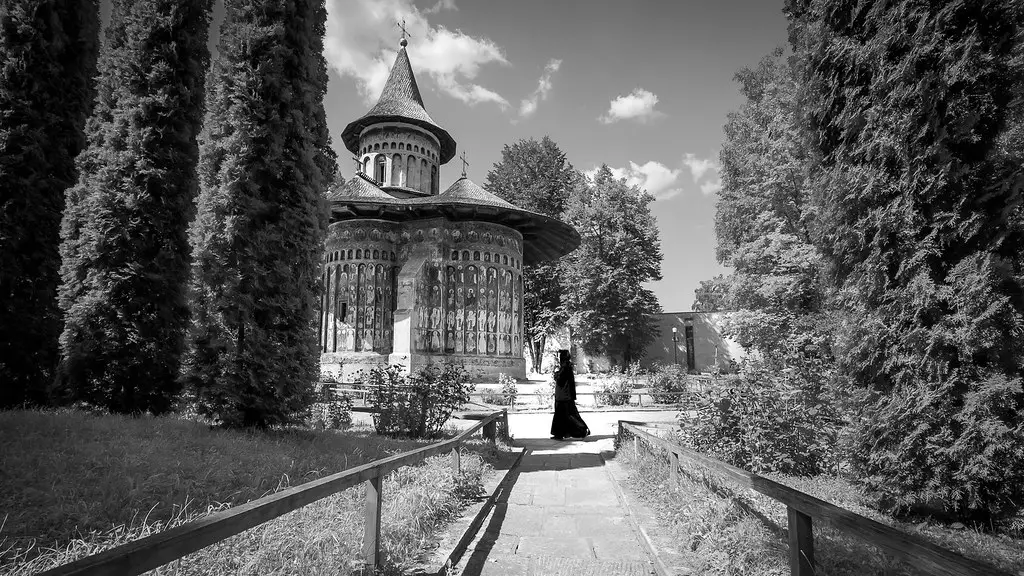
Voronet Monastery is a medieval Eastern Orthodox monastery located in the village of Voronet in Romania.
What to see or do: Admire the stunning frescoes which depict scenes from the life of Jesus Christ, the lives of Saints, and the Last Judgment, painted in the famous “Voronet blue” color.
Marvel at the intricate details and vibrant colors that have made the frescoes world-renowned.
Don’t miss: The fresco of the Last Judgment, which covers the entire western wall of the church. This masterpiece is considered one of the greatest works of Christian art in the world.
Insider travel tips: – Visit early in the morning to avoid large crowds and to see the frescoes in the best light.
17. Hunedoara Castle
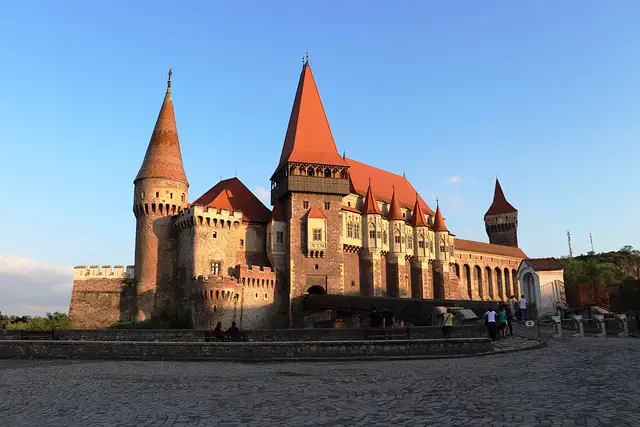
Hunedoara Castle, also known as Corvin Castle, is a Gothic-Renaissance castle located in Hunedoara, Romania.
What to see or do: Visitors can explore the castle’s many rooms, towers, and courtyards to learn about its fascinating history and architecture. Highlights include the Knights’ Hall, the Torture Chamber, and the impressive drawbridge and moat.
Don’t miss: Be sure to check out the castle’s impressive collection of medieval weapons and armor, which includes swords, shields, and even cannons.
Visitors can also see the castle’s well, which is said to have been dug by Turkish prisoners in just three days.
Insider travel tips: – The castle can get quite crowded during peak tourist season, so consider visiting early in the morning or later in the afternoon to avoid the crowds.
18. Stavropoleos Church
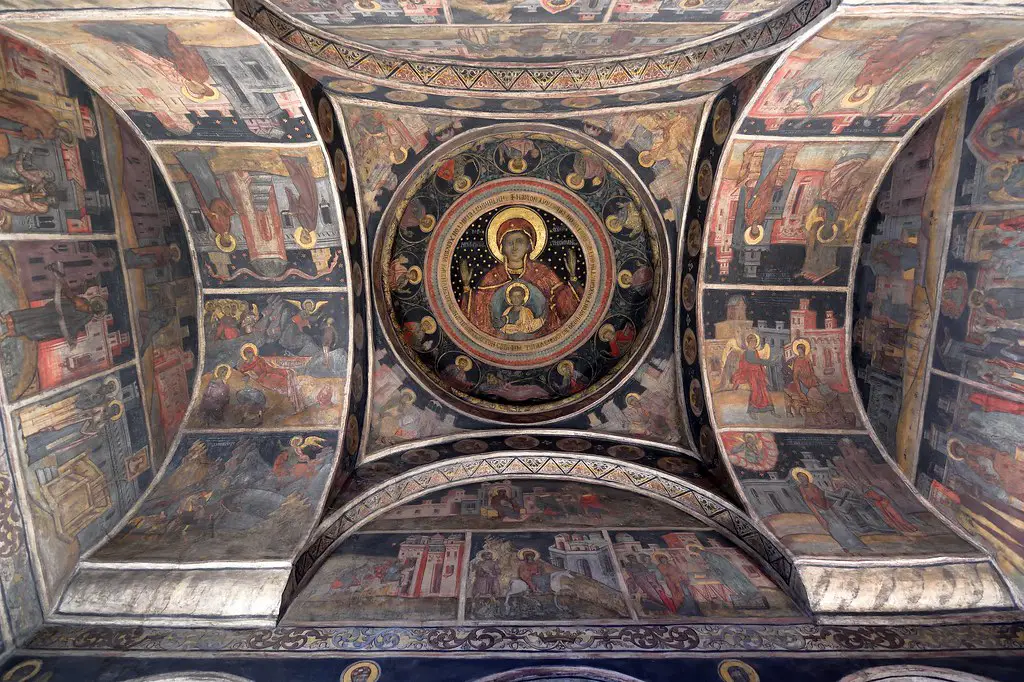
Stavropoleos Church is a small but picturesque Eastern Orthodox monastery located in the old town of Bucharest, Romania.
What to see or do: Admire the unique architecture of the church, which combines elements of Brancovenesc and Byzantine styles. Marvel at the intricate frescoes and icons adorning the walls and ceilings.
Listen to the beautiful chants performed by the resident choir during religious services.
Don’t miss: The peaceful courtyard garden, where you can relax and take in the serene atmosphere of the monastery. The monastery also has a gift shop where you can buy souvenirs and religious items.
Insider travel tips: – Check the church’s website for information about religious services and special events.
19. The Alba Iulia Fortress
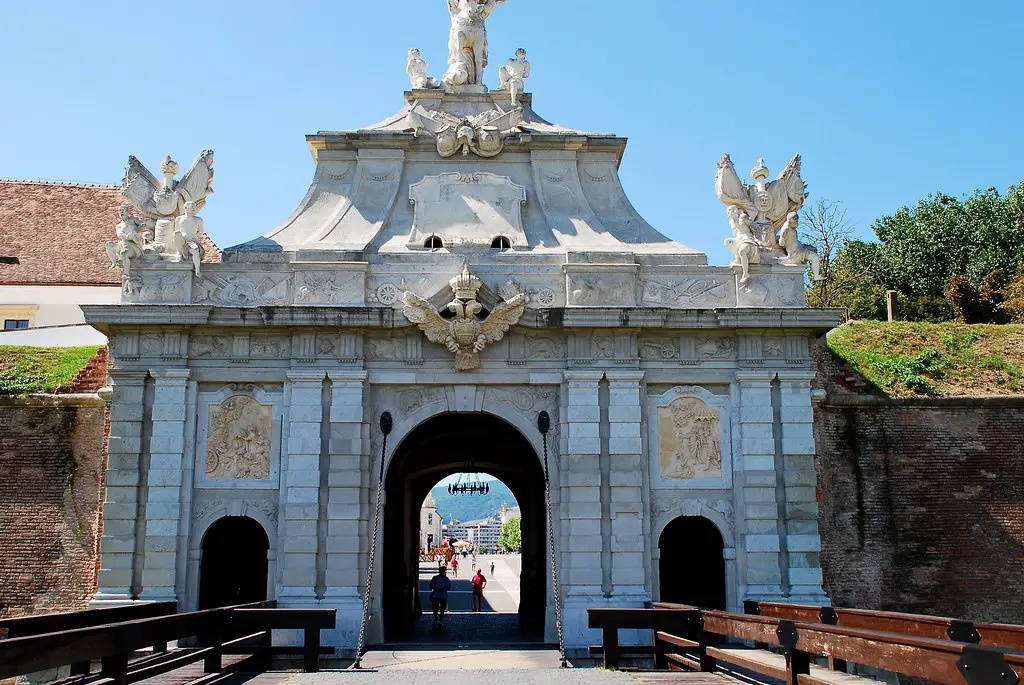
A historic fortress in Alba Iulia, Romania that dates back to the 18th century.
What to see or do: Marvel at the imposing walls and towers of the fortress, stroll along the ramparts, visit the impressive Gate of the Third Millennium, explore the museums within the fortress walls, including the Union Museum and the National Museum of the Union, attend events and festivals that take place within the fortress, such as the Alba Carolina Citadel Music Festival.
Don’t miss: The Changing of the Guards Ceremony, which takes place daily at noon by the Gates of the Fortress; the Star-shaped Citadel, a unique structure that is one of the largest and most well-preserved Vauban-style fortresses in Eastern Europe; and the stunning views of the city and surrounding countryside from atop the Fortress walls.
Insider travel tips: Allow plenty of time to explore the whole fortress, as there is a lot to see and do. Wear comfortable shoes, as there is a fair amount of walking involved.
If attending an event, be sure to check the schedule in advance and book tickets ahead of time if necessary. And don’t forget your camera – there are plenty of photo opportunities within the Fortress walls!
20. Prislop Monastery
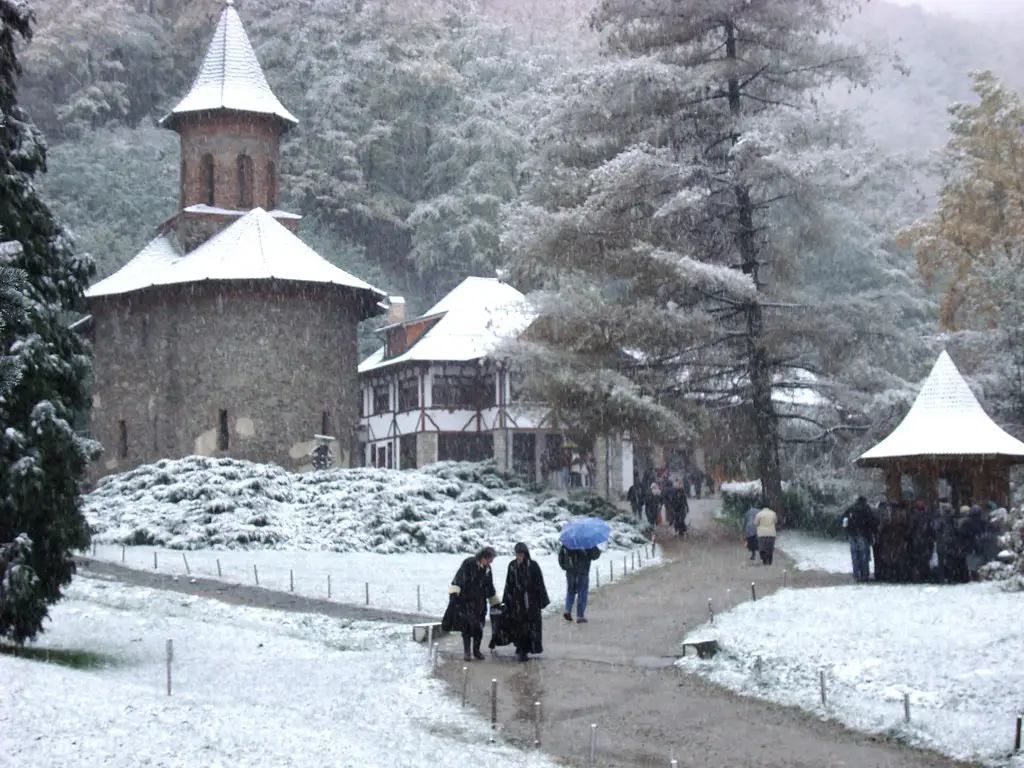
Prislop Monastery is a Romanian Orthodox monastery located in the heart of the Apuseni Mountains.
What to see or do: Visitors can explore the church, which dates back to the 14th century, and admire its beautiful frescoes and icons. The monastery is also home to the tomb of the beloved Orthodox monk, Arsenie Boca.
Don’t miss: Don’t miss the chance to take in the breathtaking natural surroundings of the monastery. The area is known for its stunning mountain views, lush forests and crystal-clear streams.
Insider travel tips: Arrive early in the morning to avoid the crowds. Women should make sure to wear clothing that covers their shoulders and legs, out of respect for the monastery’s rules.
If you’re interested in learning more about the history of the monastery and the life of Arsenie Boca, consider taking a guided tour.
21. Citadel of Deva
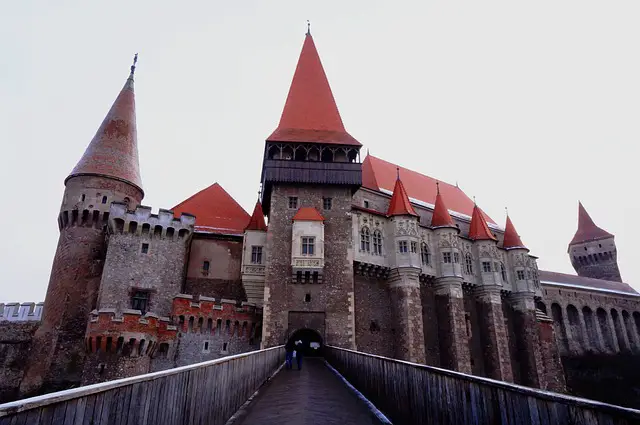
The Citadel of Deva is a fortress located in the city of Deva, in Romania. The Citadel was built in the 13th century and served as a military fortress to protect the city.
What to see or do: Visitors can explore the Citadel and learn about its history. You can visit the museum inside the Citadel and admire the weaponry and military equipment used in battles.
You can also take a guided tour to learn about the architecture and design of the fortress.
Don’t miss: Don’t miss the panoramic views from the top of the Citadel. You can see the city of Deva and the surrounding mountains.
Insider travel tips: – Wear comfortable shoes as there are some steep steps to climb to reach the top of the Citadel.
22. Scărișoara Cave

Scărișoara Cave is a natural wonder located in the Apuseni Mountains of Romania.
What to see or do: Visitors can explore the largest underground glacier in Romania, which has formed over the past 3,500 years. The cave is also home to unique rock formations and underground rivers.
Don’t miss: The main attraction of Scărișoara Cave is the ice formation, which measures about 75 meters in length, 15 meters in width, and 16 meters in height.
Insider travel tips: – The cave is open to visitors from May to October, with guided tours available for groups of up to 18 people.
23. The Merry Cemetery in Sapanta
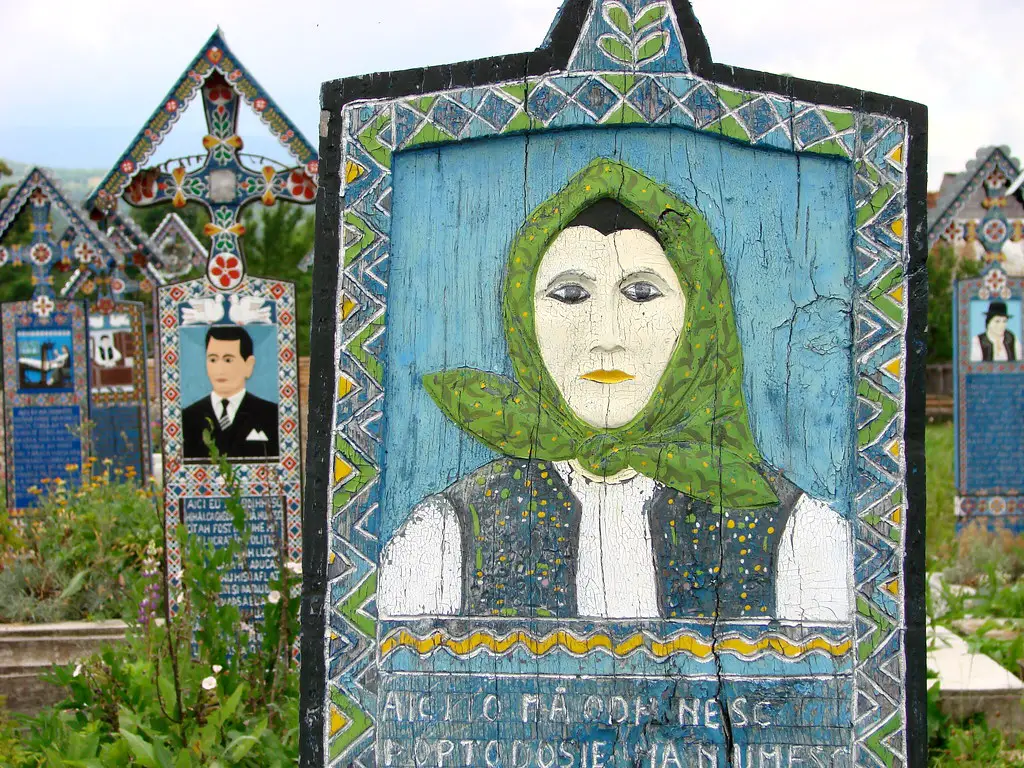
The Merry Cemetery in Sapanta is a unique cemetery of funerary art that celebrates the lives of the deceased rather than mourning their passing.
What to see or do: Visitors can walk through the cemetery and admire the colorful gravestones that display humorous and even sarcastic epitaphs about the lives of the people buried there.
The stones are decorated with vivid images that depict the lives of the deceased and their professions.
Don’t miss: The central crucifix that shows the Tree of Life is a must-see spot to take photos. Look for gravestones that are painted bright blue, green, and yellow, which represent hope, life, and faith, respectively.
Insider travel tips: It’s best to visit the Merry Cemetery in the morning to avoid the crowds and experience a peaceful atmosphere. Hire a local guide for an in-depth understanding of the tombstones’ unique decorations and their cultural significance.
Also, try the local specialty of horinca, a traditional brandy made from plums, which is sure to warm you up on a chilly day.
24. The Painted Monasteries of Bukovina
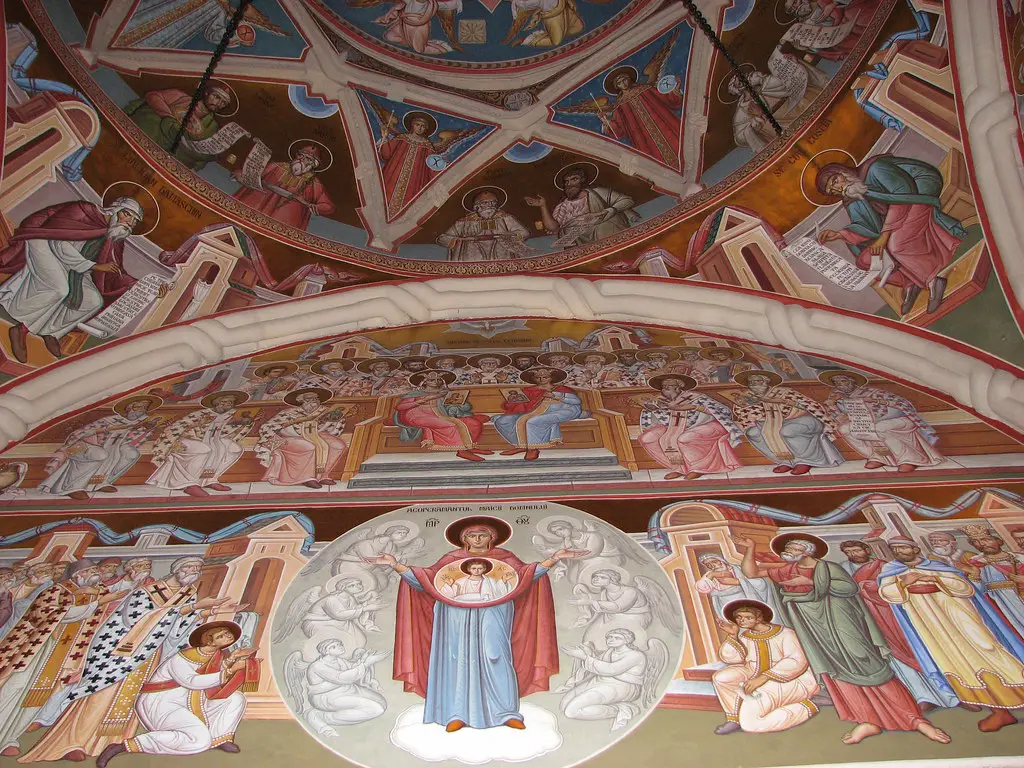
A collection of eight Eastern Orthodox monasteries located in the northwestern region of Bukovina, Romania.
What to see or do: Marvel at the remarkable frescoes and intricate exterior paintings that cover the walls of these UNESCO World Heritage sites. Each monastery tells a unique story of the Byzantine era through its vibrant and detailed artwork.
Don’t miss: Voronet Monastery, known as the “Sistine Chapel of the East.” Its iconic depiction of the Last Judgment is considered a masterpiece of medieval art.
Insider travel tips: Visit during the summer months for the best weather and lighting for photography. Go early in the morning to avoid crowds and have time to fully appreciate each site.
And don’t forget to take some time to explore the charming nearby villages and countryside.
25. Bicaz Gorge
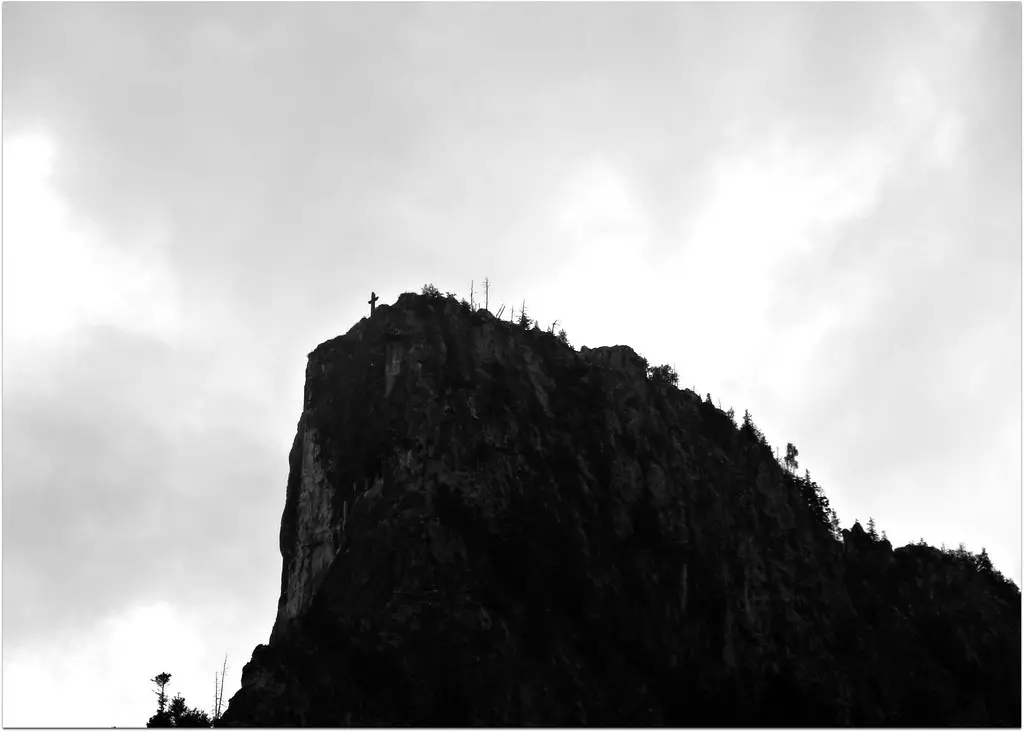
Bicaz Gorge is a narrow canyon located in the Eastern Carpathian Mountains of Romania.
What to see or do: Take a scenic drive through the gorge and admire the towering limestone cliffs that rise up on either side of the road.
Stop at one of the several lookout points to capture stunning photos of the dramatic landscape. You can also go hiking, fishing or take a boat ride on the Bicaz Lake.
Don’t miss: The Red Lake – a beautiful natural dam lake with crystal-clear water located north of the Bicaz Gorge. It is a popular spot for fishing, kayaking, and hiking.
Insider travel tips: – Try to avoid visiting during peak season (June-August) as it can be very crowded.
26. Cetatuia Monastery
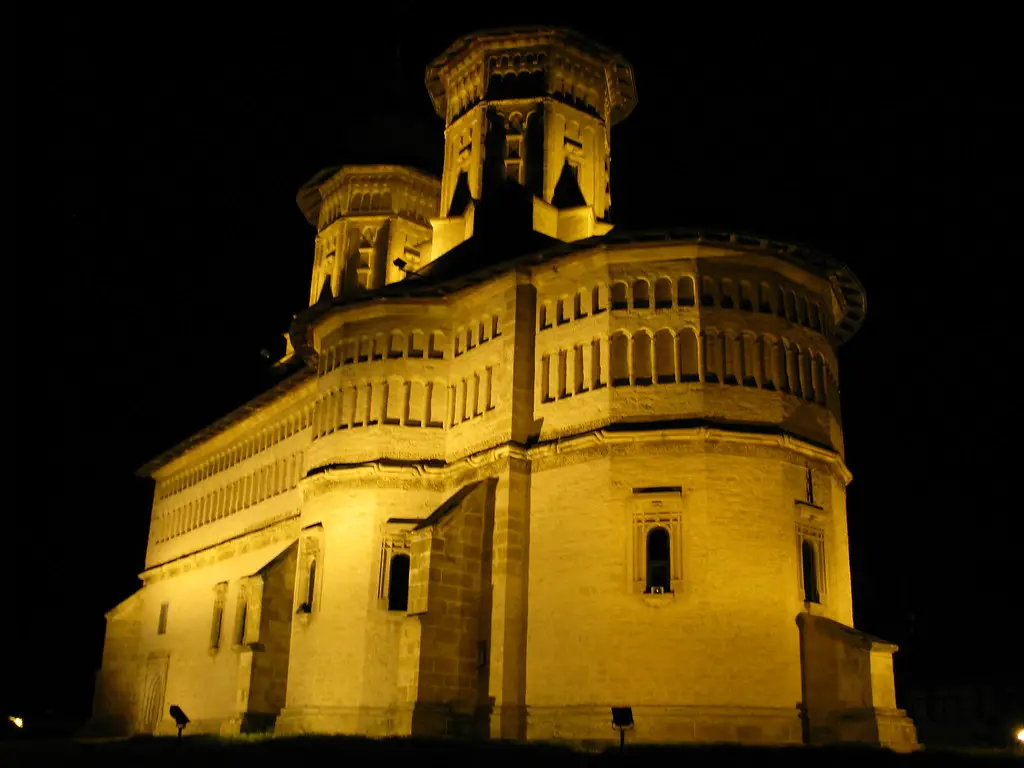
Cetatuia Monastery is a beautiful 17th-century Orthodox monastery located on a hill overlooking the city of Iasi in Romania.
What to see or do: Visitors can explore the monastery’s stunning architecture, including its impressive bell tower and beautiful frescoes.
The monastery also has a small museum with exhibits on the history and art of the area and a lovely garden to enjoy.
Don’t miss: Be sure to take in the panoramic views of Iasi and the surrounding countryside from the hilltop location of the monastery.
Also, make sure to see the impressive collection of religious artifacts, including some rare icons.
Insider travel tips: The monastery can be reached on foot from the city center, but be prepared for a bit of a hike uphill.
Alternatively, you can take a taxi or drive and there is ample parking available on site. Visitors should dress modestly and be respectful of the religious significance of the site.
The best time to visit is in the morning or late afternoon when the light is most beautiful.
27. Cozia Monastery
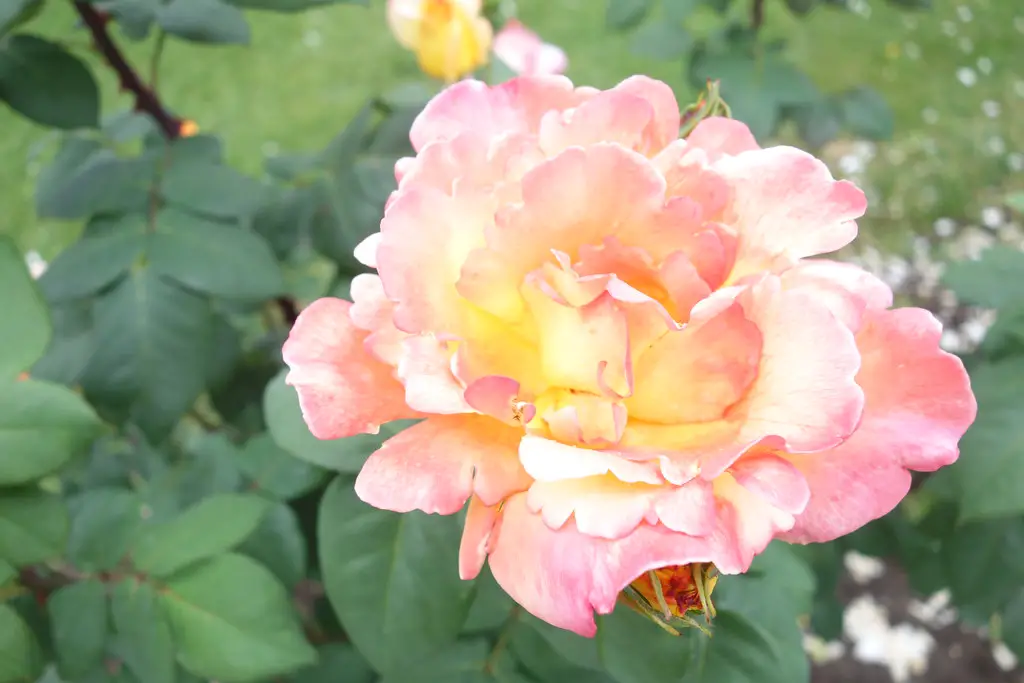
Cozia Monastery is a medieval Romanian Orthodox monastery, located on the banks of the Olt River, near the town of Călimănești in Vâlcea County.
What to see or do: Visitors can see the beautiful frescoes and paintings adorning the walls and ceilings of the monastery’s church, which date back to the 14th century.
The complex also includes a museum, a library, and a conference room.
Don’t miss: The tomb of Prince Mircea the Elder, who commissioned the construction of the monastery in the 14th century, is located inside the church.
Visitors can also admire the impressive carved wooden doors that date back to the 17th century.
Insider travel tips: To get the most out of your visit, consider hiring a guide who can show you around the monastery and share its fascinating history.
It’s also a good idea to arrive early to avoid crowds and take advantage of the peaceful surroundings.
28. Rasnov Cave
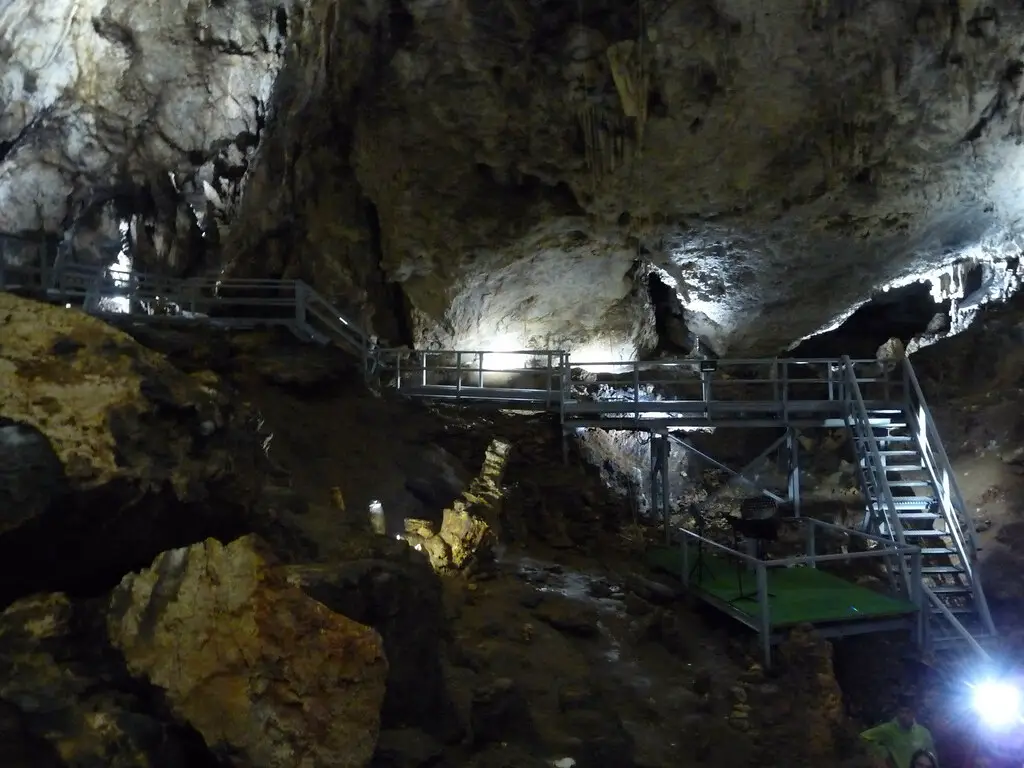
Rasnov Cave is a natural limestone cave located in Rasnov, Romania.
What to see or do: Visitors can explore the underground cave, which features stunning stalactite and stalagmite formations. A guided tour of the cave is available to help visitors fully appreciate the natural wonder.
Don’t miss: Be sure to bring warm clothing, as the cave averages a chilly 8°C (46°F) year-round. Also, keep an eye out for the bat colony which calls the cave home.
Insider travel tips: The cave is open for tours every day except for Monday.
As the site is a bit off the beaten path, visitors are advised to come prepared with their own transportation rather than relying on public transit.
29. The Danube Delta
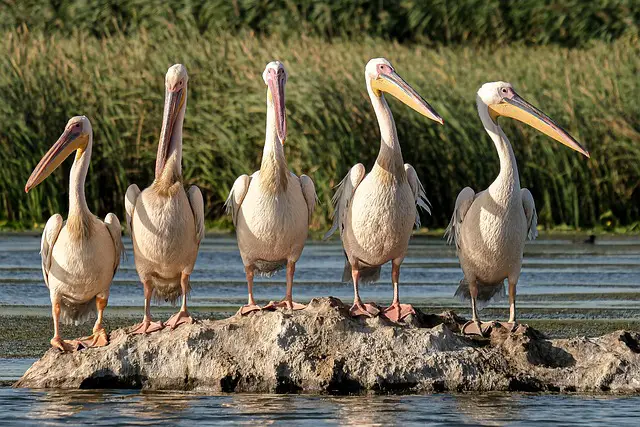
The Danube Delta is a vast wetland area, located in the eastern part of Romania, where the Danube River flows into the Black Sea.
It’s the second-largest river delta in Europe and one of the best-preserved deltas in the world. The area is a UNESCO World Heritage Site and a Biosphere Reserve.
What to see or do: Visitors can take a boat tour to explore the delta’s channels, marshes, and lakes, home to an impressive diversity of plant and animal species, including over 300 species of birds.
Fishing and bird watching are popular activities. During the summer, visitors can swim in the sea or relax on the sandy beaches.
Don’t miss: A must-see attraction in the Danube Delta is Letea Forest, Europe’s only delta forest and a unique ecosystem, dominated by centuries-old oak and ash trees.
Also, the fishing villages, such as Sulina or Crisan, offer an opportunity to experience the traditional way of life in the delta.
Insider travel tips: To fully enjoy the Danube Delta, consider spending at least a few days in the area. Accommodations range from guesthouses to eco-lodges, and many offer packages that include boat tours or other activities.
If you want to avoid the crowds, plan your visit outside of the high season (July-August) and opt for a more personalized tour experience with a local guide.